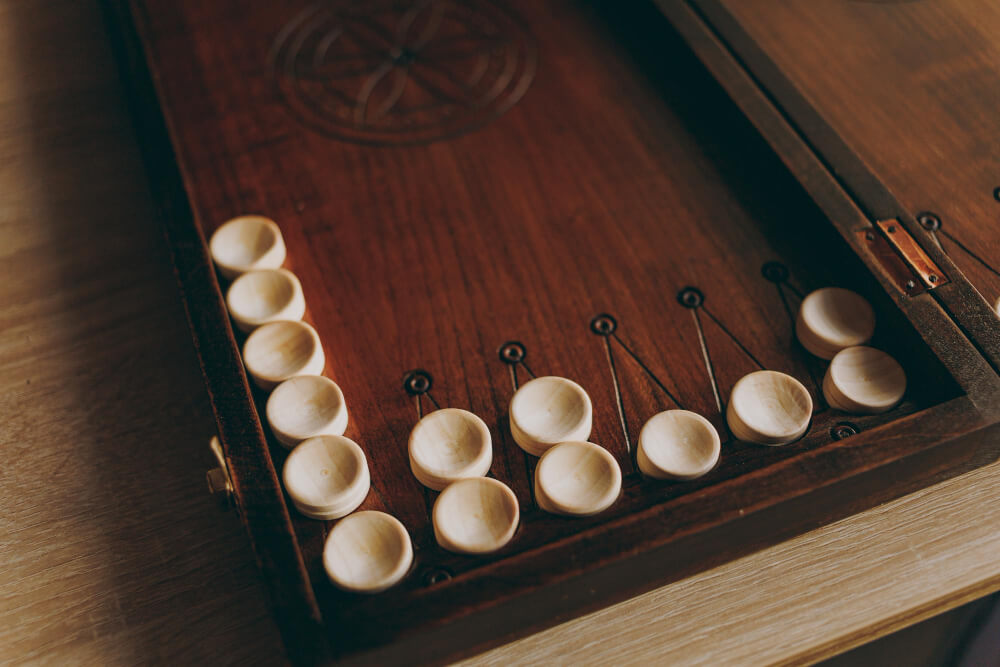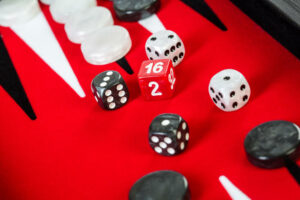Backgammon is a game of luck and skill, combining elements of strategy and probability. Knowing the odds of success for each move you make can help you maximize your chances of winning in Backgammon. Calculating these probabilities isn’t always easy but with some practice it becomes second nature. In this article, we’ll cover how to calculate the probability of your backgammon move so that you can increase your chance at victory!
Importance of probability in backgammon
Probability is an important concept in Backgammon. By calculating the likelihood of achieving a certain outcome, you can make informed decisions on which moves to make and when to take risks. Knowing the odds of your move will give you the edge over other players who may be less savvy about probability principles. For example, if you want to split, and you are afraid to do so, because the next turn you can get hit, calculating the odds the opponent can hit you can resolve the issue.
ALSO READ: Backgammon Rules
Backgammon Probabilities
The table below shows the probabilities of rolling a particular sum when throwing two dice in Backgammon. Each sum from two to twelve can be obtained in different ways, resulting in a non-uniform sample space. For example, the sum of four can be rolled in three different ways, while the sum of eleven can only be rolled in two different ways. Understanding the probabilities of rolling certain sums is important in Backgammon, as it can help players make more informed decisions during the game.
| Sum of Two Dice | Probability |
|---|---|
| 2 | 1/36 |
| 3 | 2/36 |
| 4 | 3/36 |
| 5 | 4/36 |
| 6 | 5/36 |
| 7 | 6/36 |
| 8 | 5/36 |
| 9 | 4/36 |
| 10 | 3/36 |
| 11 | 2/36 |
| 12 | 1/36 |
How to Calculate the Probability of Your Backgammon?
In Backgammon there are 2 dice. This means that there are 36 possibilities of dice, from 1-1 all over to 6-6. This means you have a roll option of 2.77% for every dice. So if you want to calculate the odds, you first need to understand what dice you want (or don’t want, in case you calculate the odds for your opponent’s move). The second thing you need to do is to multiply the number of options of the dice by 2.77%. This is the probability. Let’s look at this example:
Our player here rolled 2-3 for his first roll and he wants to know if moving one piece from point 13 to point 11 and one piece from point 13 to point 10 is the right move:
He is afraid that he will get hit the next turn by the opponent. Let’s calculate the odds of this scenario.
First, let’s understand what dice the opponent needs to roll for hitting us. The opponent needs to move at least 9 pips in order to hit us.
so every roll that combines 1 and 2 is irrelevant to him. 3-3 can hit in this situation, 3-6 can hit in this situation, 4-5 can hit in this situation, 4-6 can hit in this situation, 5-4 can hit in this situation, 6-3 can hit in this situation, and 6-4 can hit in this situation.
We count 7 options that can get us hit. Multiply this number by 2.77 and this is the probability to get hit in the next turn. 7×2.77= 19.4%.
Notice that x-y and y-x are not the same options and you need you to count them as separate options. For example, 4-5 and 5-4 are different.
Another example:
What is the probability of the black piece hitting one of the white pieces?
Take a moment to try to calculate by yourself. First, let’s eliminate the irrelevant options.
The dice have to include 1 or 4 so the piece will release from the bar – so every other option is irrelevant. If we roll the dice and got 1 on one die, we need the other die to be 6.
So our options here are 1-6 and 6-1. If we roll the dice and got 4 on one die, we need the other die to be 3 or 4. So our options here are 3-4, 4-3, and 4-4. We got 5 options here, which means the probability is 2.77×5=13.85%.
Match equity tables
In addition to the probabilities of the dice and moves inside the game, There are calculations of probabilities outside the board. Match equity tables talks about the probability to win the whole match considering how many points you need to get in order to win the game and how many points your opponent needs to get in order to win the game. This table could give you a better understanding if you should use the doubling cube or not.
How to calculate probability faster?
When playing backgammon in real-life situations, it is important to be able to quickly calculate the probability. In some tournaments, there may be time constraints due to clock rules. Even in casual settings, you may feel pressure to calculate quickly. Practicing frequently can help you become proficient in rapidly and accurately calculating the probability.
One effective way to practice is by using software or sites that calculate dice probabilities. Attempt to calculate the odds on your own and then check your accuracy by using the software or site. If your calculation was incorrect, try again and analyze where you made the mistake. Remember that practice is key to achieving perfection.
In addition, try to eliminate quickly dice that are irrelevant. For example, if you need to move 10 pips, you can eliminate all the dice that involve 1,2, and 3. There is no combination that involves these numbers that will give 10 pips.
Tob Sum Up
Calculating the probability of your backgammon moves can give you a competitive edge in this classic game. By the probabilities of each roll, well as match equity tables, can make better decisions about which to make and which ones to. With practice, you become proficient at quickly calculating the odds of any given move. So next time you’re playing a friendly game or competing in an official tournament, use these tips and strategies to help guide your decision-making process!
Frequently Asked Questions
The odds to roll 6 in Backgammon is 30.5%.
The odds to roll a double in Backgammon is 16.67%.
The odds of winning the backgammon game depend on various factors such as skill level, strategy, and luck. However, the player with better skills and strategy is more likely to win. On average, the winning chances of a skilled player against an unskilled player are around 75%.
Coming off the bar in Backgammon means getting a piece back into the game after it has been hit and placed on the bar. The odds of coming off the bar depend on the number of points the opponent has made in their home board. If the opponent has made 6 points in their home board, the chances of coming off the bar with a roll of 1, 2, or 3 are 59.53%. With a roll of 4, the chances decrease to 49.31%; with a roll of 5 or 6, the chances are even lower.
What are the odds of rolling doubles in backgammon?
- The odds of rolling doubles in backgammon are 1 in 6 or approximately 16.67% for each individual die. Therefore, the odds of rolling doubles on both dice are (1/6) x (1/6) = 1/36, or approximately 2.78%. Rolling doubles can be beneficial in backgammon as it allows the player to move four times instead of two, which can change the course of the game.






